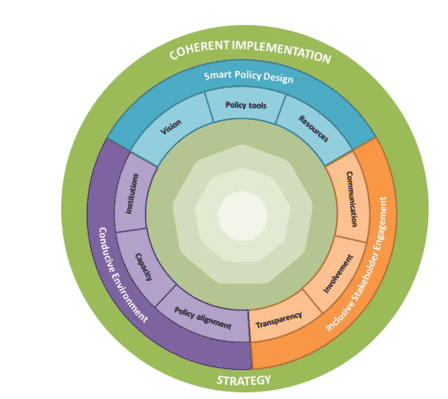Curriculum for Excellence review: implementation framework
A framework for how we will address the recommendations in the Organisation for Economic Co-operation and Development (OECD) report, ‘Scotland’s Curriculum for Excellence: Into the Future’. This will include using the analysis and advice set out in Professor Stobart’s working paper on assessment in secondary education.
Implementation
The OECD itself set out a recommended approach to the implementation of their recommendations, which has been accepted. The OECD says Scotland should: Adopt a structured and long-term approach to implementation. Building on the system's existing strengths, Scotland should consider how to take on board the recommendations in this report as a coherent package rather than individual policy actions for the next steps.

Source: OECD, An implementation framework for effective change in schools[1]
The framework the OECD sets out recognises the complexities of education policy and recommends balancing traditional implementation processes with more bottom-up approaches that leave room for co-construction and local adaptation. It suggests that to accomplish education change in schools and settings, a coherent, actionable and well-communicated implementation strategy that engages stakeholders early on and takes into account the environment as part of the policy design process, is needed.
The Scottish Government will use this framework to work with partners and stakeholders to develop a coherent and long term approach, accepting the OECD's view that implementation is the key factor in the success or failure of translating specific policy objectives into concrete education changes, leading to improvement in schools and settings.
The approach to implementation will also take in the OECD's recommendations about purposeful and impactful stakeholder involvement (in particular students) [recommendation 2.1] and a coherent communication strategy to support developments of CfE [recommendation 2.3]. The important roles and views of teachers/practitioners, pupils, parents/carers in this is particularly acknowledged.
We will continue to engage with front line teachers through the national Teacher Panel - see section of Governance and Implementation Framework below - and other routes including the professional associations, to ensure the voices of those who deliver education to young people continue to be heard. The role and involvement of the profession is central to this work, ensuring teachers and practitioners alongside pupils are engaged and included.
Wider and more in depth engagement with learners has been growing in recent months and years, culminating in the commitment to create the Children and Young People's Education Council. This is in the process of being established and we have sought to build on the learning from a number of youth engagement panels which have taken place during the pandemic. As we develop the approach to implementation of this framework and will work with partners to support this type of engagement at all levels. We already have guidance in place to support schools and local authorities to engage and respond to their learners, parents and teachers. We will continue to ensure this is fit for purpose and seek feedback on opportunities for improvement.
Contact
Email: judith.clark@gov.scot
There is a problem
Thanks for your feedback